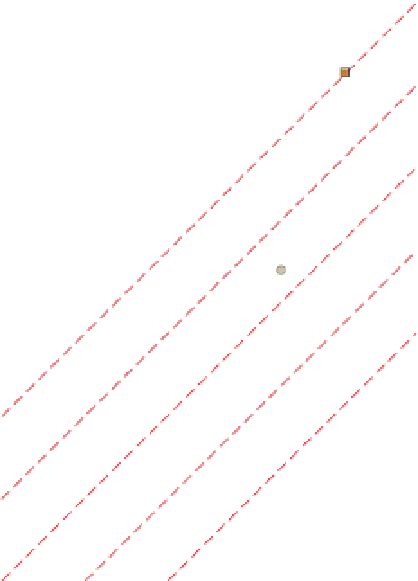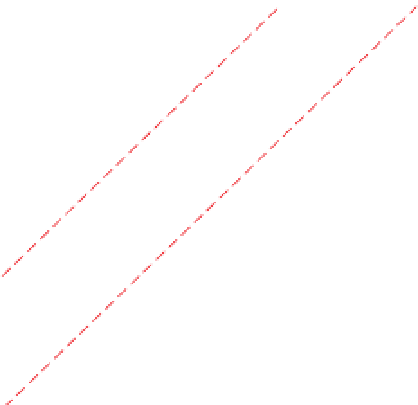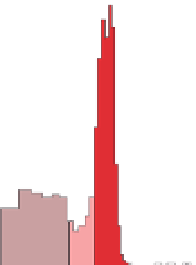Geoscience Reference
In-Depth Information
a)
10
3
Colluvial hardpan
Lateritic residuum
Ferruginous saprolite
Mottled zone
Iron segregations
Saprolite
Saprock
Bedrock
Fracture zone
10
0
J
Induced
10
2
10
-1
10
0
J
Remanent
10
1
10
-2
10
-1
Königsberger
ratio
10
0
0
20
Metres
b)
10
-1
10
0
10
-2
Unaltered
10
-1
Outer
margin
10
-3
Inner
margin
Altered
interior
10
-4
10
-2
10
-4
10
-3
10
-2
10
-1
10
0
10
1
Induced magnetism (A/m)
Figure 3.54
Variation in induced and remanent magnetisms through
the regolith pro
le at Lawlers. Redrawn, with permission, from
Emerson and Macnae (
2001
).
10
-3
10
-2
10
-1
10
0
10
1
Induced magnetism (A/m)
Figure 3.55
Magnetic property variations through a fracture zone
in a granite. (a) Profiles across the fracture zone, and (b) remanent
versus induced magnetism and the Königsberger ratio (Q). Based
on diagrams and data in Henkel and Guzmán (
1977
).
n
= 5406
Alteration related to hydrothermal fluids can cause sig-
nificant changes in rock magnetism, including the creation
of CRMs. Hydrothermal temperatures of greater than 150 °
C start to break down titanomagnetites to form titanohae-
analysis revealed a correlation between susceptibility and
the intensity of hydrothermal alteration within fractures.
The
10
-4
10
-3
10
-2
10
-1
Susceptibility (SI)
Figure 3.56
Frequency histogram of magnetic susceptibility data
from a drillhole in a Canadian granite. Redrawn, with permission,
material comprises clay, carbonate and
iron hydroxide minerals; the
'
highly altered
'
'
altered
'
material comprises
which are not the economic minerals. Mineral zonation of a
deposit may mean that the ore and magnetic minerals occur
in different parts of the mineralised system. For example, in
VMS deposits magnetite and pyrrhotite tend to concentrate
near the base of the massive sulphide mineralisation. An
example of reduced magnetism in ore zones is haematitic
iron ores formed by enrichment of banded iron formation
due to weathering-related destruction of magnetism.
chlorite-group minerals; the
'
intermediate
'
group com-
prises epidote minerals; and the
'
unaltered
'
material
is
fresh biotite
hornblende granite. Since alteration associ-
ated with mineralisation normally extends over a much
larger area than the mineralisation itself, the destruction
(or creation) of magnetism can be a useful exploration
vector. Another important example is the alteration haloes
associated with porphyry style mineralisation. Phyllic,
-
































































































































































































































































Search WWH ::

Custom Search